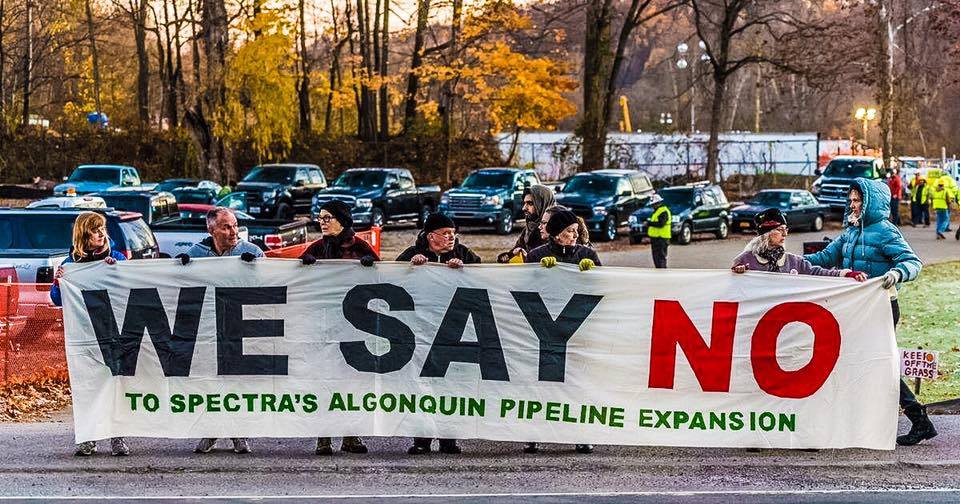By ResistAIM
On Friday, July 29th, a coalition of 21 plaintiffs including local groups Riverkeeper, Sierra Club Lower Hudson, Food & Water Watch NY, Stop the Algonquin Pipeline Expansion (SAPE), and Reynolds Hill, Inc. filed a brief in the U.S. Court of Appeals for the District of Columbia seeking to overturn the Federal Energy Regulatory Commission’s (FERC) March 2015 approval of Spectra Energy’s Algonquin Incremental Markets (AIM) pipeline project. Although many state and local officials, including Governor Andrew Cuomo, both New York Senators and Representatives Nita Lowey and Eliot Engle have come out against the pipeline, so far construction is still moving forward.
The coalition’s brief addresses some of the points they had raised in their Rehearing Request that FERC rejected in January 2016. First it argues that the Commission improperly segmented the Algonquin pipeline expansion by dividing it into three different projects to avoid having to address its full environmental impact. As one Spectra official told an industry journal “you end up with a lot less potential opposition if you do that.” The AIM project is the first of three expansion Spectra plans for the Algonquin pipeline. The other two, Atlantic Bridge and Access Northeast, continue precisely where Aim leaves off to create a greatly enlarged path for fracked gas from Pennsylvania to Canadian export terminals.
Approximately 2,159 feet of the AIM pipeline will run through property that is part of the Indian Point nuclear power plant. The brief challenges the approval of installing the pipeline a little over 100 feet from critical safety structures at the Indian Point. It notes that the Commission relied on findings by Entergy Nuclear Operations, the company that operates Indian Point, and the Nuclear Regulatory Commission (NRC), neither of which have expertise in pipeline safety. Entergy and the NRC had concluded that the AIM Project would not impact safety at Indian Point, a conclusion challenged by both elected officials and independent nuclear and pipeline safety experts.
Lastly the brief argues FERC violated its own regulations by relying on a third-party contractor that had a financial interest in the construction of the AIM Project. FERC relies on third-party contractors to prepare the Environmental Impact Statements required for approving projects. Those contractors are identified by and paid for by the project applicant – in this case Spectra. To avoid conflicts of interest, potential third-party contractors must complete and submit an Organizational Conflict of Interest statement. No such statement has been found in the AIM record however. An investigation has also revealed that NRG, the third-party contractor that prepared the Environmental Impact Statement for AIM, was working for Spectra on another related project at the same time in an apparent violation of FERC regulations.
Nancy Vann, whose property is being taken by eminent domain for the AIM project, said “FERC has only rejected one pipeline project in its entire 40 year history. It’s shameful that the public must take a government agency to court in order to make it do its job. I’m so grateful for the determination of Riverkeeper, SAPE, Food & Water Watch and all of the other coalition members who have persisted in asserting these important issues and I’m looking forward to getting our day in court.”

